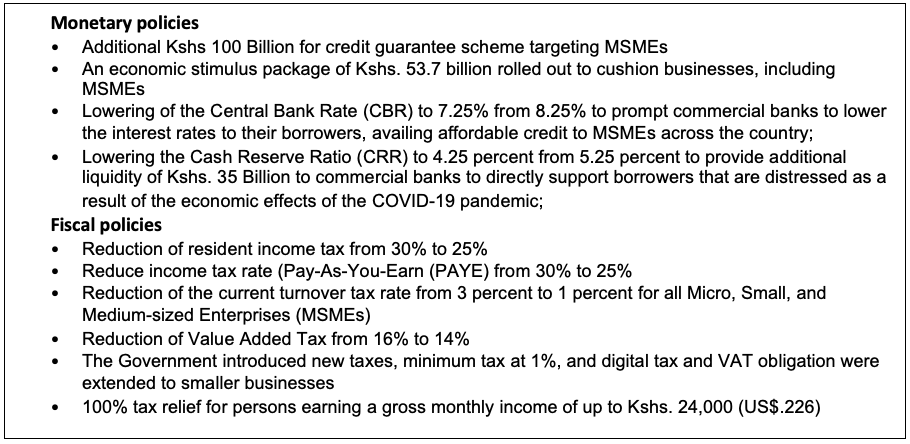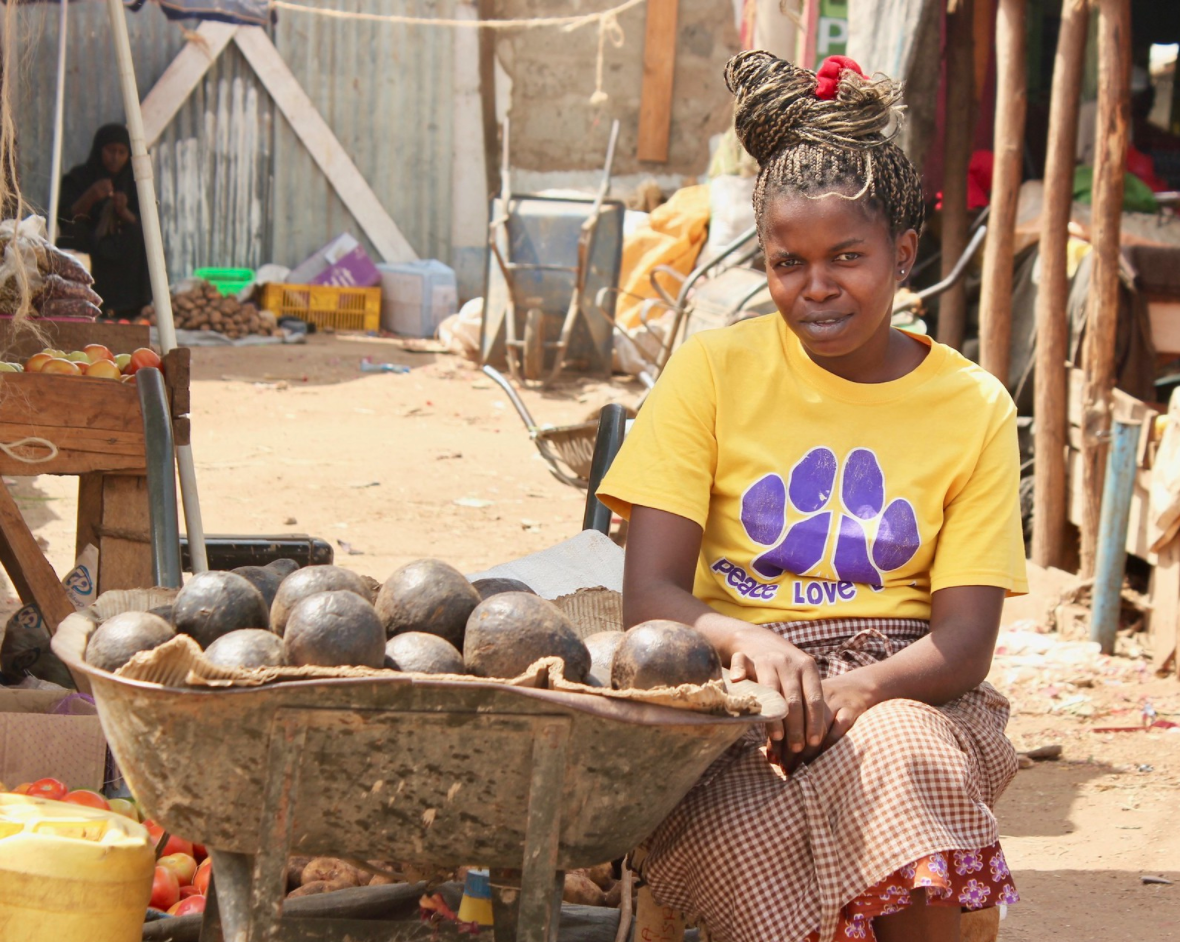In this blog, Carolyne Ajema, Kirabo Suubi, Naome Wandera, Cleopatra Mugyenyi and Chryspin Afifu of the International Center for Research on Women (ICRW) Africa Hub, elaborate on the economic stimulus measures implemented by the Government of Kenya in response to the pandemic and how these impacted informal workers.
Women predominantely earn a livelihood from informal urban economies. Among the female laborforce, informal women workers comprise 92% by proportion. Data shows that women workers in informal employment comprise 89% in Sub-Saharan Africa, 95% in South Asia, and 59% in Latin America. Drivers for women’s entry into informal work include poverty, social and gender norms that limit their choice of work, the triple burden of care and the associated conflict, skills gap, lack of access to and control of resources essential for business start-up and expansion, among others. Hence some women opt for the flexible work environment provided by the informal economy despite low returns and limited protections.
The 2019 Kenya census estimates a national labor force of 22.3 million, with women accounting for more than 50% of the total working population. According to the World Bank (2020) Report, Kenya’s informal sector accounts for at least 87% of employment opportunities. The informal sector in Kenya offers employment to approximately 15 million Kenyans, according to 2018 estimates, compared to the 2.9 million who work in the formal sector. These 15 million Kenyans are domestic workers, cleaners, beauticians, mechanics, and street vendors, among many more. Besides, the informal sector in Kenya is highly unregulated, with workers therein enjoying limited or no social or labor protections.
COVID-19 response and impact on informal workers
The onset of COVID-19 resulted in socio-economic shocks within the informal sector – business owners and workforce. In Kenya, the government instituted movement restrictions, and lockdowns affected business operations. The lockdowns overwhelmingly impacted women within the informal economy, including daily/hourly wage workers and self-employed and home-based workers. Women engaged in the informal sector suffered employment and income losses due to disruptions in supply chains and reduced business operating hours that further led to business closures. These measures also contributed to vulnerabilities among informal women traders. Some of them spent nights within their business premises or experienced state-inflicted violence upon their non-observance of stipulated curfews. These measures resulted in business closures, reduced workforce, increased production costs and necessitated a change in business models.
The economic stimulus package and the informal workers in Kenya
The Government of Kenya instituted economic and fiscal policy measures at the onset of the pandemic, some of theses are shown in figure 1 below.

Despite the notable contribution of the informal workforce towards Kenya’s economic growth, a policy analysis undertaken by the International Center for Research on Women (ICRW) on the gendered impact of the economic stimulus package on informal women workers revealed that:
- The economic stimulus package rolled out in Kenya favored the formalized businesses entities and workforce.
- Most informal businesses did not benefit from their ‘unregistered’ status, in fact it made them invisible to the government.
- The loss of income and livelihoods among informal workers placed them at risk of indebtedness and ineligible to access financial products to cushion or revive their businesses.
- Most informal businesses rely on daily earnings to stock up supply. The lack of liquidity and inability to tap into formal financial institutions has increased their reliance on ‘loan sharks’ for business capital, thus impacting the eligibility to credit in the future. Most informal businesses remain under-capitalized.
- An expansion of the informal economy due to the job losses within the formal sector
- Most informal workers are women whose involvement in paid work was impacted due to increased care burden at home – resulting in scaled-down paid work hours to tend to their household responsibilities.
While some of the COVID-19 related restrictions no longer exist, there is uncertainty due to the fluid nature of the pandemic and government responses. There is a need for a further deep-dive on the extent to which informal workers missed out on the intended benefits of the economic stimulus package.
Moving from invisible to visible: Recommendations a gender responsive stimulus programs for informal workers
Policy actors need to recognize the contributions of the informal sector to economic growth. Hence need for economic and stimulus measures that are responsive to women workers in this sector. We recommend the following actions during the economic response and recovery phases:
- Financial inclusion: The recovery of the informal sector requires deliberate measures to inject liquidity into the businesses affected by the pandemic. The government should adopt mechanisms that are inclusive and accessible such as cushioning microfinance institutions better to serve informal businesses through the provision of capacity building and developing tailored loan insurance products tailored for MSMEs.
- Gender Analysis: Undertake a gendered analysis of current policy measures, including the capture of sex and gender-disaggregated data of the informal workers. This data should be available to policymakers to inform effective gender budgeting, evaluation of interventions, and budget allocation to cater to the unique needs of informal women workers.
- Adopt evidence-based practices to policy formulation: Research and evidence generation on economic and stimulus measures responsive to women workers in the informal sector are important. These in-depth assessments will continuously capture best practices in coping and resilient mechanisms within the informal sector, focusing more on women. The assessment will also help identify the nature and impact of the pandemic on informal women workers, and priorities for action.
Photo credit – Avacado seller” by Nagarjun is licensed under CC BY 2.0






